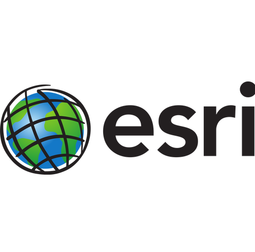
Technology Category
- Analytics & Modeling - Real Time Analytics
- Platform as a Service (PaaS) - Application Development Platforms
Applicable Industries
- Cities & Municipalities
- Equipment & Machinery
Applicable Functions
- Human Resources
Use Cases
- Personnel Tracking & Monitoring
- Smart City Operations
Services
- System Integration
- Training
The Customer
Akron
About The Customer
The City of Akron, Ohio, is the state's fifth-largest city with a population of 200,000. Governed by Mayor Daniel Horrigan and the Akron City Council, it is a midlevel municipality that manages a range of city services, from parks and recreation to fire, water, and sanitation. The city employs about 2,100 full-time and seasonal employees across all divisions. Like other cities and towns, Akron was thrust into uncharted territory when COVID-19 began spreading across the United States. The city officials had to make fast decisions to protect not only residents but also its employees, beginning with the initial stay-at-home orders issued in March 2020.
The Challenge
The City of Akron, Ohio, faced a significant challenge when the COVID-19 pandemic hit. With a workforce of about 2,100 full-time and seasonal employees across various divisions, city officials had to make quick decisions to protect not only residents but also its employees. The initial stay-at-home orders issued in March 2020 necessitated accurate, real-time data to make important decisions on how to bring employees back to work and support active city employees. The city needed to determine which employees were essential and nonessential, manage benefits for essential employees, and track leave types to analyze its impact on staffing levels and overtime costs. However, the city's legacy applications made access to real-time data for decision-making difficult. The process of obtaining personnel data was time-consuming and involved several steps, including requesting reports from the appropriate staff member or department or directly accessing the database to pull data into a CSV format.
The Solution
To address this challenge, the City of Akron's four-member geographic information system (GIS) team implemented ArcGIS Insights, an analysis software that offers spatial and nonspatial analysis capabilities to explore data and visualize results. This software was chosen for its ease of deployment and comprehensive data analysis capabilities. The GIS team was able to accomplish all the traditional business intelligence activities with the licenses they already had, making it an easy choice. The implementation of Insights was simple and straightforward, and the team was able to become proficient in its use within an hour. Each morning, data is updated with a count of essential and nonessential employees on an Insights dashboard. This dashboard also includes financial data, such as overtime costs incurred during a period and what the overtime codes are.
Operational Impact
Quantitative Benefit

Case Study missing?
Start adding your own!
Register with your work email and create a new case study profile for your business.
Related Case Studies.

Case Study
Turning A Stadium Into A Smart Building
Honeywell created what it called the “intelligent system” for the National Stadium in Beijing, China, turning the venue for the opening and closing events at the 2008 Summer Olympics into a “smart building.” Designed by highly controversial artist Ai Weiwei, the “Bird’s Nest” remains one of the most impressive feats of stadium architecture in the world. The 250,000 square meter structure housed more than 100,000 athletes and spectators at a time. To accommodate such capacity, China turned to Honeywell’s EBI Integrated Building Management System to create an integrated “intelligent system” for improved building security, safety and energy efficiency.

Case Study
Smart Water Filtration Systems
Before working with Ayla Networks, Ozner was already using cloud connectivity to identify and solve water-filtration system malfunctions as well as to monitor filter cartridges for replacements.But, in June 2015, Ozner executives talked with Ayla about how the company might further improve its water systems with IoT technology. They liked what they heard from Ayla, but the executives needed to be sure that Ayla’s Agile IoT Platform provided the security and reliability Ozner required.

Case Study
IoT enabled Fleet Management with MindSphere
In view of growing competition, Gämmerler had a strong need to remain competitive via process optimization, reliability and gentle handling of printed products, even at highest press speeds. In addition, a digitalization initiative also included developing a key differentiation via data-driven services offers.

Case Study
Predictive Maintenance for Industrial Chillers
For global leaders in the industrial chiller manufacturing, reliability of the entire production process is of the utmost importance. Chillers are refrigeration systems that produce ice water to provide cooling for a process or industrial application. One of those leaders sought a way to respond to asset performance issues, even before they occur. The intelligence to guarantee maximum reliability of cooling devices is embedded (pre-alarming). A pre-alarming phase means that the cooling device still works, but symptoms may appear, telling manufacturers that a failure is likely to occur in the near future. Chillers who are not internet connected at that moment, provide little insight in this pre-alarming phase.

Case Study
Premium Appliance Producer Innovates with Internet of Everything
Sub-Zero faced the largest product launch in the company’s history:It wanted to launch 60 new products as scheduled while simultaneously opening a new “greenfield” production facility, yet still adhering to stringent quality requirements and manage issues from new supply-chain partners. A the same time, it wanted to increase staff productivity time and collaboration while reducing travel and costs.

Case Study
Integration of PLC with IoT for Bosch Rexroth
The application arises from the need to monitor and anticipate the problems of one or more machines managed by a PLC. These problems, often resulting from the accumulation over time of small discrepancies, require, when they occur, ex post technical operations maintenance.



